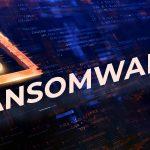The ever growing STOP/Djvu Ransomware family frequently spawns several variants, and EEMV Ransomware is another addition to the group. Like other versions of the widely used ransomware code, EEMV Ransomware renders its victims’ files inaccessible, including photos, music, documents, and video data.
Upon file encryption, the infection appends the .EEMV file extension to affected files, leaving a ransom note named !README!.txt on the user’s desktop and in every folder containing encrypted files. The note instructs victims to contact the hackers via restorealldata@firemail.cc and gorentos@bitmessage.ch, or through the Telegram account @datarestore.
Unfortunately, EEMV Ransomware victims do not have access to a free decryption tool at the moment. The only reliable way to recover affected files is to restore them from a backup. Also, they could try using alternative data recovery options. Yet, bear in mind that alternative data recovery methods may not unlock the encrypted files. Although the hackers behind EEMV Ransomware promise to provide a file decryptor for payment, it is most likely that you may pay and never receive the decryption key. Therefore, it is not recommended to transfer the ransom fee in the first place.
EEMV Ransomware spreads similarly to most ransomware infections. It is generally delivered via malicious spam emails or unreliable third-party websites. Once it accesses the targeted system, EEMV Ransomware utilizes the AES cipher algorithm to encrypt important files and then demands a ransom for the decryption key. The decryption cost is $980, but the cybercriminals will offer a 50% discount if contact is established within the first 72 hours after infection.
How to Protect Yourself from the EEMV Ransomware Infection
To protect yourself from the EEMV Ransomware attack, you should practice safe web browsing habits like refraining from opening email attachments from unknown senders and downloading programs from unreliable sources. You should also have a reputable malware remediation tool installed on your computer. That way, you can regularly scan for elements associated with this troublesome ransomware infection and other malware. Also, to reduce the potential damage of a future ransomware infection, please consider backing up your files on an external hard drive or cloud storage.





